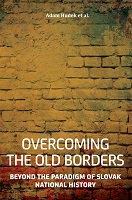“Europe in Miniature” Representations of Ethnic Diversity of Hungary in Statistics and Homeland Studies until the Revolution of 1848 – 1849
“Europe in Miniature” Representations of Ethnic Diversity of Hungary in Statistics and Homeland Studies until the Revolution of 1848 – 1849
Author(s): Peter Šoltés
Subject(s): Cultural Anthropology / Ethnology, Nationalism Studies, 19th Century, Identity of Collectives
Published by: SAV - Slovenská akadémia vied - Historický ústav SAV
Keywords: Ethnic Diversity; Hungary; Revolution of 1848 – 1849;
Summary/Abstract: This study aims to analyse the construction and dissemination of ideas about the ethnic composition of Hungary in scholarly discourse of the first half of the “long” 19th century. I have concentrated primarily on the texts that originated in the discipline of statistics (in German Statistik, Staatskunde). It was established in the last third of the 18th century in German universities, where it soon spread to the Austrian and Hungarian academic environments. Then I observed how different ethnic groups were represented in statistics and homeland studies, and which concepts were used in their categorisation. Specifically, I examined, in what context and with what significance were the concepts of nation, nationality, folk, used, or, more precisely, their German forms of Nation, Volk, Völkerschaft, and other words and phrases derived from them. In the period studied, the statistics of Hungary or the Austrian state, as well as most of the homeland studies analysed, were published mostly in German, which at that period took over the role of Latin as the language of science also in Hungary. The period’s ethnonyms were recorded by different variants. For example, in the texts subjected to analysis, Serbs were referred to using the ethnonyms Serben, Ráczen, Illyrier, Slovaks were referred to as Slowaken, Schlawacken, Sclawaken as well as using ethnonyms related to all Slavic tribes such as Slawi, Slaven, Slawen. Hungarians were denoted in statistics and homeland studies as Ungarn, Ungern, wahre Ungarn, eigentliche Ungarn, Magyaren, eigentliche Magyaren, Madscharen, Madjaren and so on. Therefore, the variant names as captured by the period’s sources are provided in the present study in parentheses, following the current ethnonyms.
Book: Overcoming the Old Borders. Beyond the Paradigm of Slovak National History
- Page Range: 25-43
- Page Count: 19
- Publication Year: 2013
- Language: English
- Content File-PDF

